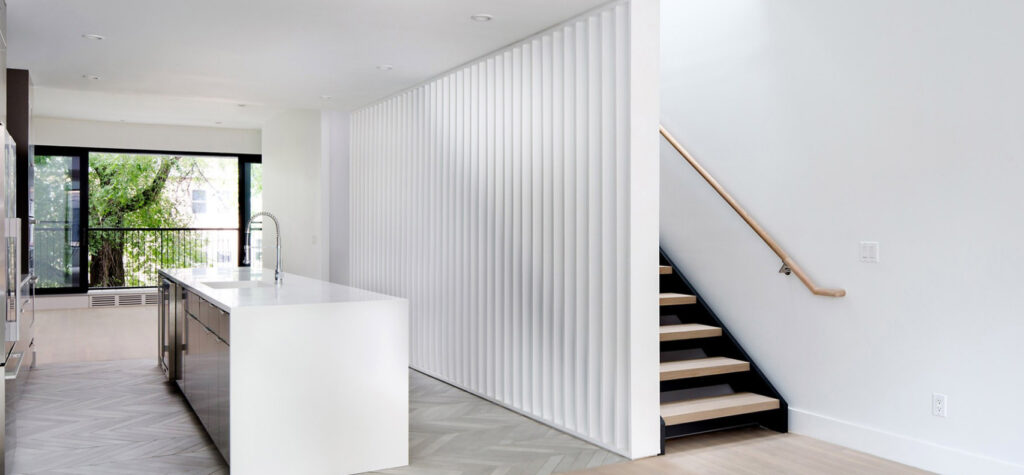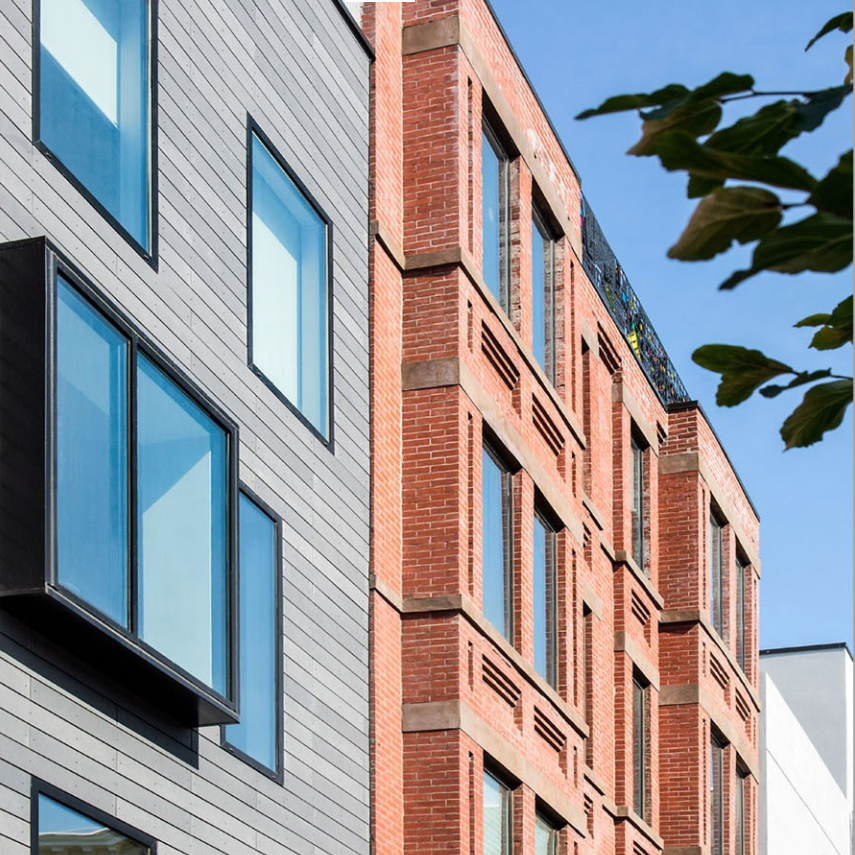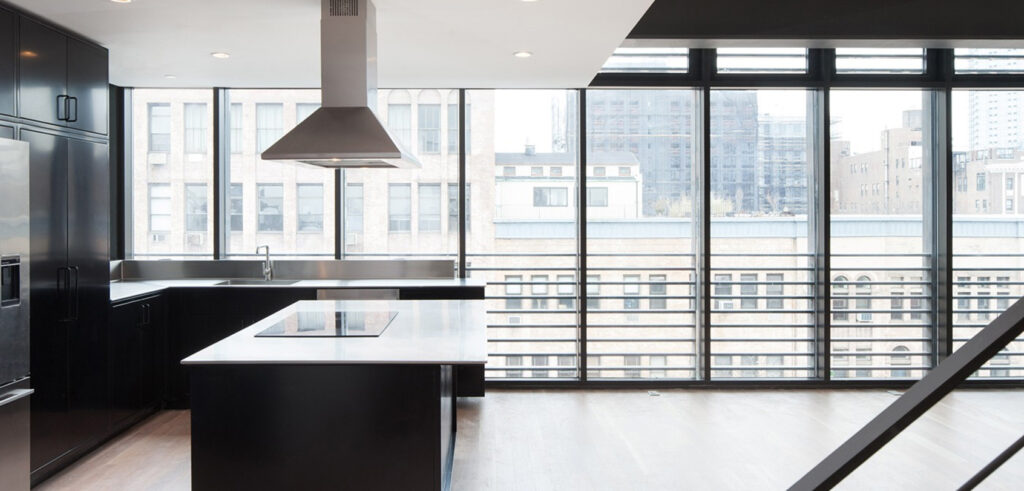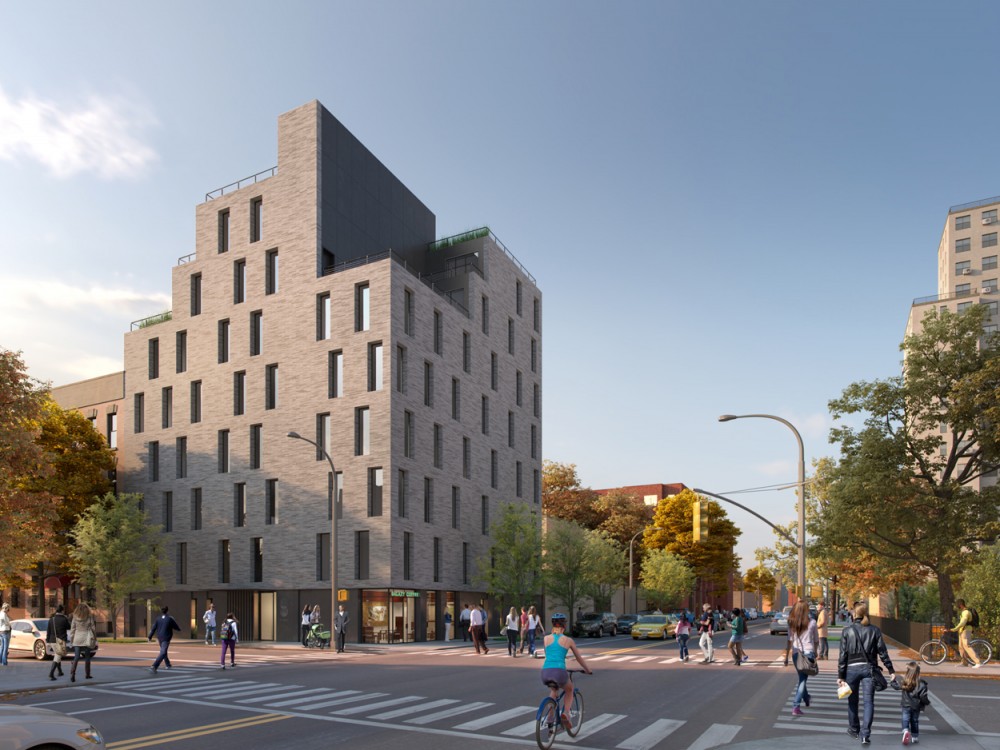Interview: Alex Barrett of Barrett Design

In September 2017, I sat down with Architect & Developer Alex Barrett of Barrett Design in Brooklyn, New York. See more information about Barrett Design at barrettdesign.com. See more articles about Alex {here} including a lecture at Harvard’s Graduate School of Design and the AIA Conference on Architecture.
Alex Barrett: I realized that there was something about the practice model that wasn’t fitting with me personally. I felt frustrated by the passivity of it. In the conventional practice model, we don’t get any input on program, the budget, or on the site. Those things are decided before the client walks in the door and we take that and do the best we can. For some people that is perfectly satisfying. For me, it felt limiting. So I tried to find an alternative.
That is when I went to Alex Garvin and started networking and asked anyone who was in real estate, “What do you do? What is it like? What role do you play?” I took some classes at NYU at night and learned about development. I tried to educate myself. Then I met Cary Tamarkin. I met Joe Lombardi. I looked at what they did and thought they got to do the design component, which I really liked. They were also involved in the bigger picture. They were choosing the site and the program. They were adding value, and they got to pick the value that they added. It checked a lot of boxes for me. Eventually, I found this small developer that had an office in SoHo. It was a two-person operation. They were two principals and I was their first hired professional.

James Petty: How much did you feel you knew about development before taking on a job in a developer’s office?
AB: I could speak the language. I could look at a pro forma and see how it balances. They still took a chance. They knew I was an architect. They knew I could at least do some design work. From my work at NYU, I could do a little bit of underwriting and understand a pro forma. They brought me in and taught me a little bit more. I did some in-house design work for them. I did a lot of underwriting for them for prospective projects. I could sit at a computer with a roll of trace paper next to me, and do an excel spreadsheet, and some massing diagrams. I understood NYC zoning and the Building Code. I could figure out how we could build a building the best we could. We would feed that in the pro forma. We would evaluate different massing schemes and what we think it would cost to build and the value we might get. It was a feedback loop. That is really what we do in my office today, and that was fifteen years ago.
What takes me today an hour or two might take a week for a conventional architect and developer client to produce. It was wildly inefficient. That taught me the value of the idea that an Architect & Developer could add a whole lot of value. That proved the efficiency idea for me. It also proved that I really had something to contribute here. I spent a year working for those two developers before I felt ready to prove it on my own. That is when I quit and started Barrett Design. That was 2005. It was a ton of luck that from the time I quit in February to the time I acquired my first property with investors was only six months. Part of my job working for the developers was meeting with equity investors. They were not my leads; they were my employer’s leads. But I got to sit in on those pitches and put together prospectuses. So I knew what was going into them and I had some practice with the process. So I called everyone that I knew. I don’t come from money. My parents met in art school and weren’t wealthy. So I called as many people as I could.
My father worked at art schools and non-profits his whole life. He doesn’t know much about real estate beyond what someone who had owned a couple of homes knows. He had been following my career. Like a good father, he was concerned that I might be doing something stupid. Out of interest, I would send him the prospectus that I had created. He happened to have a friend who was a developer in San Francisco. He sent my prospectus to him and said, “Will you take a look at this and make sure my son isn’t shooting himself in the foot?” He looked at it and said, “I think he has a really good prospectus here, and frankly, I will invest in this.” That is actually what happened. A couple of my father’s friends who were developers syndicated the first project. He also, most importantly, co-guaranteed my first loan.

JP: The biggest hurdle for most people on the first project is raising money for the initial costs or getting a co-guarantor.
AB: It is enormous. Today, the construction debt market is enormously tight. Even for me with twelve-years of successful projects, it’s still very difficult to secure construction financing.
JP: What kind of terms do you see today with construction lenders?
AB: It’s funny. The terms don’t get worse. The market for construction loans has always been relatively small. In 2005 through 2007, lenders got a little too crazy. Leverage went up; rates were really good. Then the crash came, and the market totally shifted towards the other direction. A funny thing happens when lender’s standards tighten; they don’t really use rates or terms to adjust the perceived risk. They actually just stop. It is almost like a switch. So I work with mortgage brokers. In 2016, we went out for an acquisition loan and they said that the pool for construction lenders right now was about ten lenders. I just recently went back for a refinance and to get into a construction loan, and they said that today it is about five lenders.

JP: What advice would you give your younger self just starting out?
AB: Risk is such a hard idea. Real estate people spend a lot of time talking about risk. It is this concept that is very abstract. The idea of a project going badly and losing money was entirely abstract. Whenever we put together a pro forma, we have a profit margin. We think the project is going to cost X to acquire, design, develop, and sell. And we estimate that the value of the completed project will be approximately 1.25X. Our goal is a 25 percent profit margin – those are our underwriting standards.
There is a reason that we go into a project with a profit margin. That is the cushion that you have to have to adjust. There are a lot of developers who had to make hard choices. Some people feel like they are giving something away when they start thinning out the margin. The truth is if they don’t do it, they may end up losing a lot more in the long run. We tried to take from that the idea that the market is out of our control and is always telling us something. We just have to make sure we are listening to it. The market is the market and you cannot control that. It is always telling you something.

AB: I think that architects in that traditional model are taking on an enormous amount of risk, but they just aren’t getting paid for it. We actually take on even more risk as developer architects, but we have a lot more control, and we are being paid for the risk. Paid better. For a standard architect, the profit margin is maybe a few percentage points. Any sort of hiccup in the market or if the client suddenly decides not to pay you, and suddenly your firm is in the red. It’s a very insecure position to be in. The liability risk of possibly getting sued by a client or contractor in a climate like this, which is very litigious, is enormous. You can buy as much professional liability insurance as you can, and train your employees as much as you can on procedure. It all just adds bureaucracy to the process and creates an environment where everyone is papering every decision. Everyone is very nervous to make important decisions. It is just inherently inefficient. It gums up the process, it slows the project, and it adds to the costs. That is really inefficient, and I hate inefficiency.
For more on Alex Barrett, see the book Architect & Developer: A Guide to Self-Initiating Projects. See more articles about Alex {here}.
